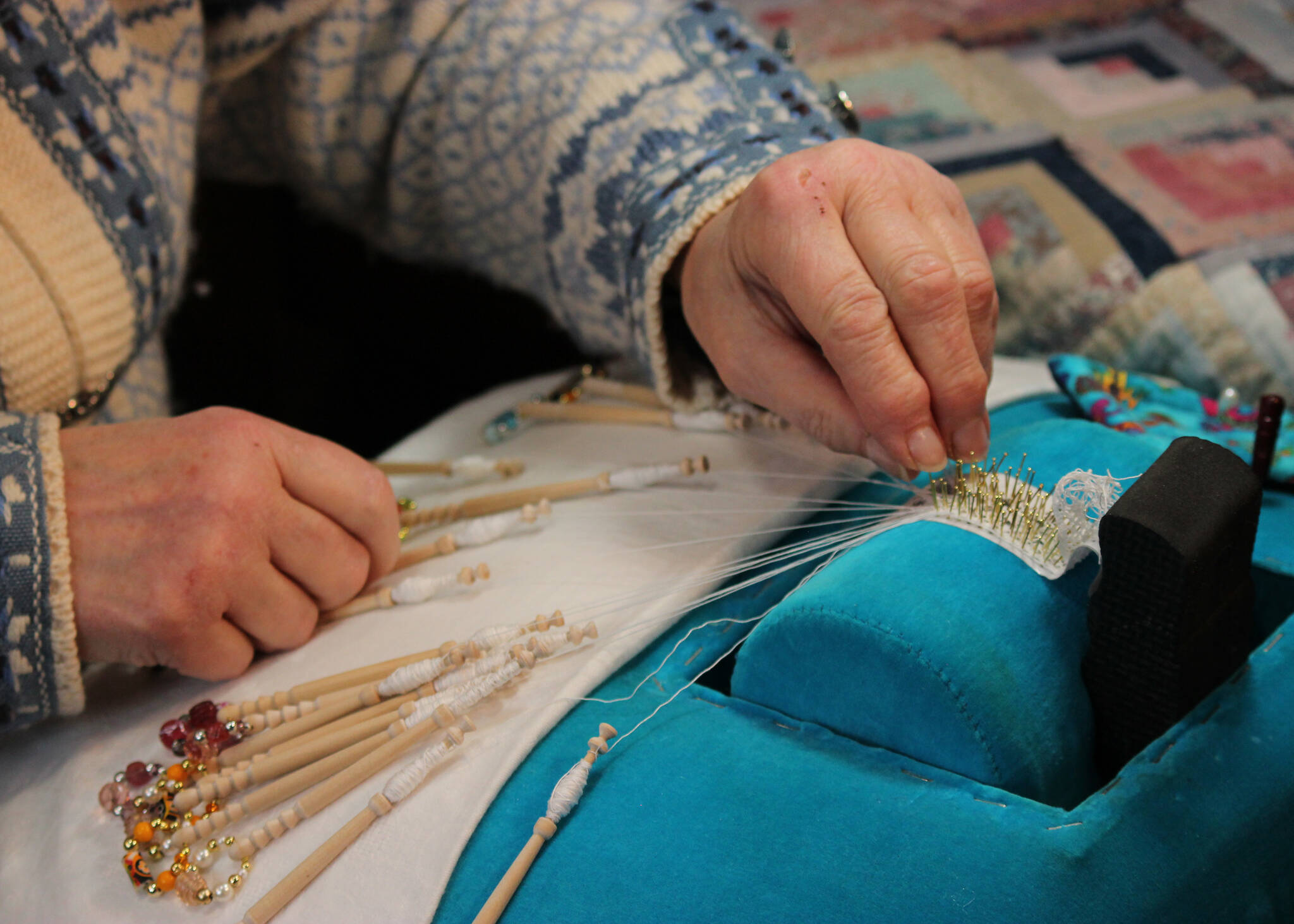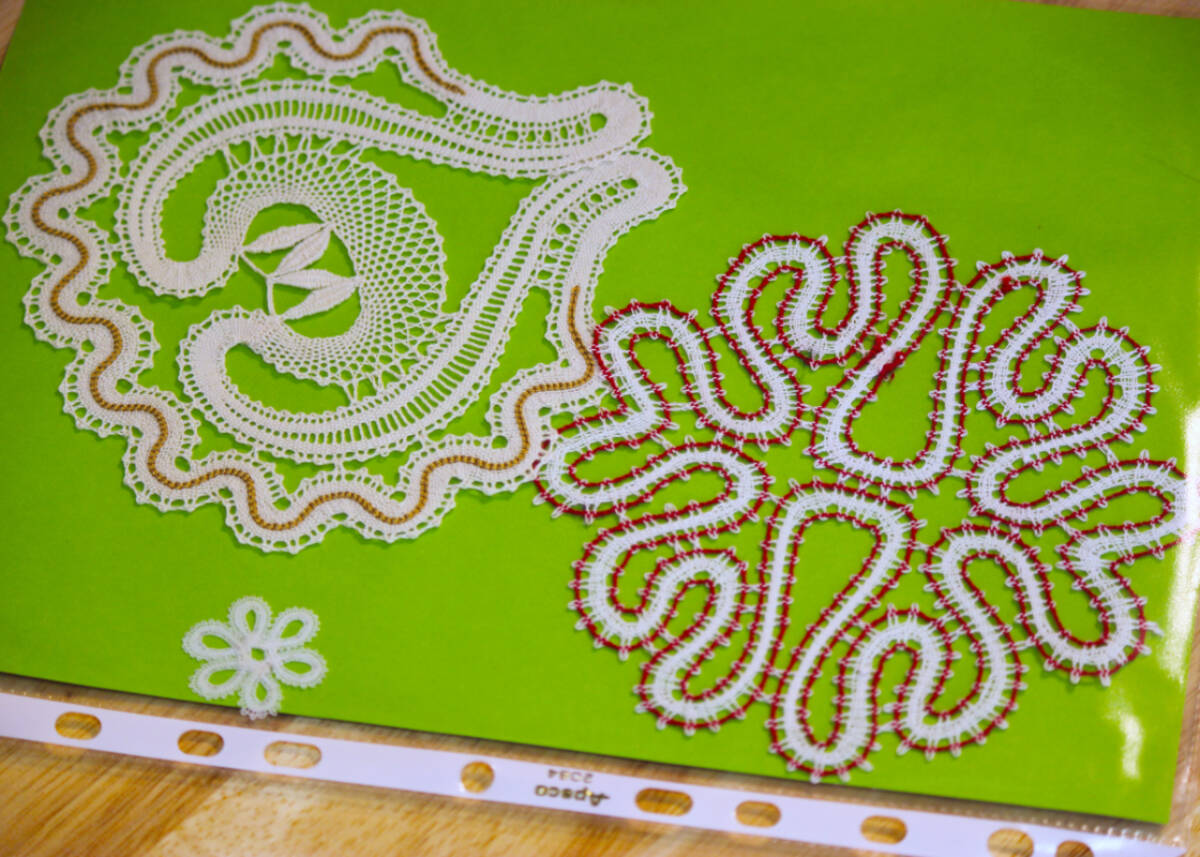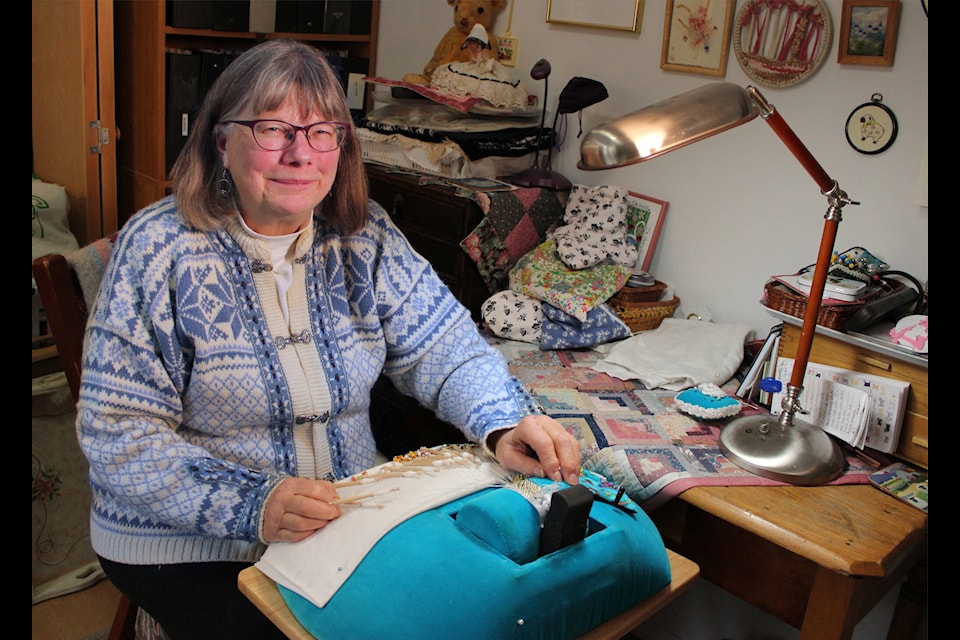Julie Ourom sits in her sewing room at her house in Riverdale, meticulously weaving threads together in the shape of a fish. She’s making a small key chain as a demonstration to the News of the basic bobbin lacemaking stitch.
Her set up consists of a pillow to push pins into, a pattern to follow, pieces of thread, and bobbins for tension. It’s a slow endeavor. Ourom estimates it takes an hour to make an inch of lace - depending on the complexity.
“It can be demanding. It can be frustrating because sometimes you have challenges figuring out a pattern. So, it takes quite a while,” said Ourom.

The craft is certainly not common in the Yukon. Ourom may be the only bobbin lacemaker in the territory. Though she does recall one woman who practiced the art, they’ve since passed away. She also acknowledges there may be someone out there she hasn’t met yet.
“There are people here who know what it is,” said Ourom. “There have been people who expressed interest in it to me, but it’s hard to say if they’ve continued with it.”
Beyond anecdotal statistics, Ourum is the only Yukoner active on the Canadian Lacemaker Count - a registry of lacemakers in the country. The count is a project of the Canadian Lacemaker Gazette. A magazine first published in 1984, the Gazette estimates there are over 1,200 lacemakers strung across Canada.
Once an enormous commercial industry, bobbin lacemaking is now mostly a hobby. The history of the craft goes back hundreds of years. According to Encyclopedia Britannica, bobbin lace was “important in fashion from the 16th to the early 20th century.” A sign of wealth, all of the who’s who of the time served up lace fits. In oil painted portraits, Marie Antoinette can be spotted sporting intricate lace collars. The Lace Guild, the largest lace organization in the United Kingdom, cites bobbin lace from Milan, Italy, as being “among the greatest achievements of the period.”
In the 1700s, the lacemaking industry was booming. Places like Italy and Northern Europe were at the center of the trade. According to the Smithsonian American Women’s History Museum, lace “played an important part in the economies of many European countries.” In a time of traditional gender roles, the trade employed mostly women, and they were busy. The Smithsonian notes that King Charles l once bought 1,600 yards of lace “to ornament his shirts.”
With the arrival of the industrial revolution in the 18th century, machine-made lace took over the game. Some continued to make lace by hand as the quality of machine lace wasn’t up to their standards. When lace fell out of fashion and the ability of machines improved, the trade, for all intents and purposes, died.
It wasn’t until the 1970s and 80s that the art appeared to come back into popularity. That’s when organizations like the Canadian Lacemaker Gazette and the Lace Guild popped up. These days many of those who make lace, do it for fun.
“It’s relaxing, there’s no pressure,” said Ourom. “It’s not like in the very early days when it was a way of making a living for women. They did it in deplorable conditions, usually in damp wet cellars with pathetic light. It certainly had an effect on their eyesight and it was hard on their hands all day.”
Though the heyday of the lace making industry is long gone, Ouroum feels that doesn’t make bobbin lace outdated.
“People still ride horses even though that isn’t the primary form of transportation anymore. Things evolve over the years, but there’s still people that enjoy doing things in different ways,” said Ourom.
The historical ties to the past are what caught her interest in the craft over 30 years ago, but the broader Canadian community is what keeps her weaving. Ourom belongs to a lacemaking club in Vancouver, where she lives part time. She also connects with international lacemakers on social media.
“There is a community in Canada. It’s small but pretty vibrant,” said Ourom.

While Ourom doesn’t make 18th century ruffled collars, she does make decorations and furniture dressings that she proudly displays in her home and gifts to friends. She also creates pieces that she frames to put on the wall.
“It’s really a labour of love,” said Ourom.
Dylan MacNeil is a freelance writer based in Whitehorse.
